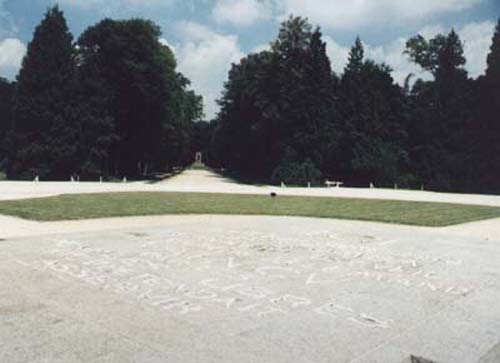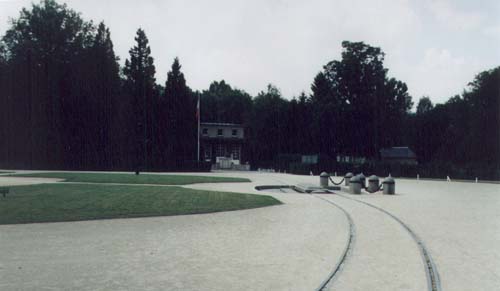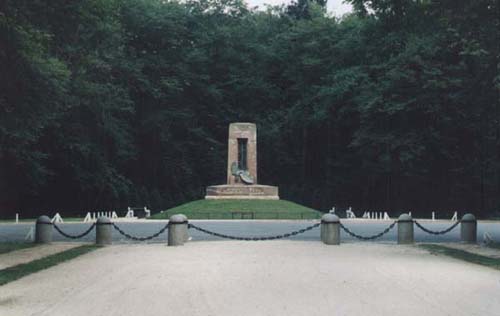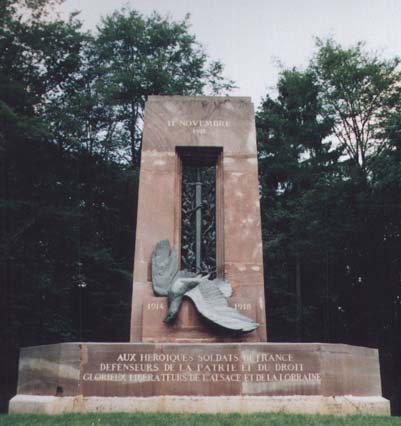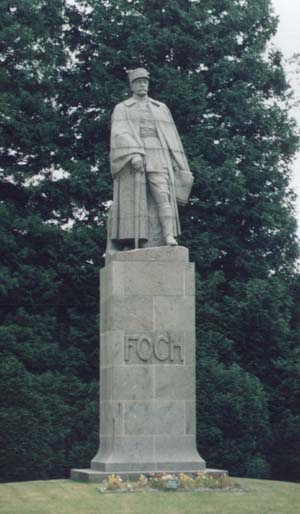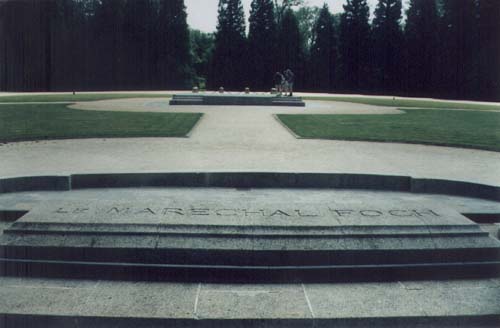
A visit to the Glade
THE GLADE OF THE ARMISTICE... On the initiative of M. Fournier, Mayor of Compiegne, the wooded bog was transformed into "The Glade of the Armistice". A boulevard, 250 feet wide, was opened up between the Compiegne-Rethondes road and the railroad. A circular clearing, 100 yards in diameter, was carved from the woods and at its center was placed a stone slab bearing the words of Binet-Valmer...
Granite slabs marked the exact positions of the cars used by Marshal Foch and the German plenipotentiaries.
Le Matin, a Paris newspaper, raised funds from its subscribers for a memorial to the liberators of Alsace and Lorraine which was placed at the far end of the boulevard.
The bronze sculpture of a sword striking down the Imperial Eagle of Germany is framed by Alsatian sandstone and inscribed "To the heroic soldiers of France - Defender of Fatherland and of Right - Glorious liberators of Alsace and Lorraine".
The "Wagon" returned to the Glade on Armistice Day 1927 when it was installed in a shelter built by the city of Compiegne with funds contributed by American, Henry Fleming.
The last of the Glade's memorials, a statue of Marshal Foch by Michelet, was dedicated in the fall of 1937 by General Georges, the Minister of War, in the presence of the Marshal's widow, Madame Foch, and General Weygand.
The dedication of the Museum of the Armistice on November 11, 1950 marked the full restoration of the Glade to its pre-1940 condition.
Contributed by Richard Doody |
